It has been a long while since the first laptop made its way on to store shelves. What led to the invention of a laptop was the necessity of a portable computer that could be lugged around and also worked on, in the absence of direct power supply. All went well until mobile phones with Internet connectivity came along, and that changed the whole dynamics of mobile computing. The mobile Internet, coupled with Internet hot-spots, fuelled the craze of ‘anytime, anywhere computing’ and suddenly we found our traditional laptops very heavy, cumbersome and in need of more electrical juice. And then, increased bandwidth and more powerful Web apps gave people the possibility of fulfi lling all their computing needs online. Thus emerged a new breed of computers, christened ‘netbooks’.
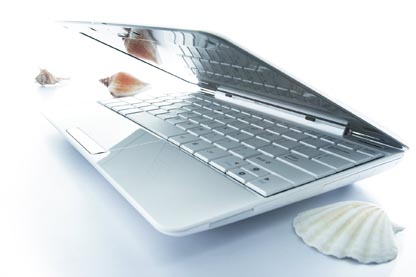
What is a netbook?
In Wikipedia’s words, “…netbooks are small, light and inexpensive laptop computers suited for general computing and accessing Web-based applications; they are often marketed as ‘companion devices,’ that is, to augment a user’s other computer access.” A typical netbook ranges from 8 inches (20.3 cm) to 11.6 inches (29.5 cm), with smaller keyboards, reduced computing power, fewer ports and no optical drives. Because of their small size and low computing power, the normal operating systems that we are so accustomed to in our daily use, aren’t the most ideal. This gave rise to the need of customising the existing operating systems so that they fitted into a netbook’s size and form, without compromising too much on the performance.
What are the operating systems that run on a netbook?
UI designers need to be given utmost flexibility and importance, when it comes to designing an operating system tailor-made for a netbook. Some of the challenges faced while building an OS for a netbook are:
1. The screen size is much smaller compared to a traditional 14-inch (35.6 cm) notebook.
2. Th e display resolution of a netbook hardly ever crosses 1024 x 768.
The Atom processor has done wonders in increasing the battery life of netbooks. Th is, coupled with the smaller display, and the way an operating system is coded, play a big role in optimising the battery life. Windows XP had been shipped with almost every netbook since the very fi rst of the breed ever left the factory. However, a lot of manufacturers are now gungho about the much-optimised Windows 7 and are hurrying to bundle the OS with their machines.
But then, how about the world of open source?
Yes, we are getting to it. :-) It is in the world of open source that most of the operating systems, that are tailor-made for netbooks, have emerged. While Ubuntu had always been in the lead, with the Ubuntu (and Kubuntu) Netbook Remix, Intel is also inching forward with its much celebrated Moblin (recently out of beta and now launched as v2.1). Th en there is one of the most interesting distributions we have come across—JoliCloud, developed by Tariq Krim ( founder of Netvibes), and based upon Ubuntu Netbook Remix.
What’s more, even Google decided not to be left behind and announced its spanking new Chrome OS. We also got to know that Acer has started to offer its Aspire One D250 with dual booting options—Windows XP and Google’s Android.The netbook industry is growing in leaps and bounds. Today, almost every social media entrepreneur sports a netbook. It’s the best time for a year-end wrap-up of Linux-based operating systems and also the netbooks that are on offer, today.
However, on a note of regret—while we were promised netbooks from Lenovo, Sony, Acer, ASUS, Dell and Samsung, we finally got trial models only from Acer and ASUS. Th e rest decided to back out at the last moment since they wanted to test their products with the newly released Windows 7 before they sent them out for review. The fact that we informed them we didn’t even plan to boot Windows on their machines, didn’t help matters. We apologise for not being able to come up with detailed reviews of other netbooks in the market.
Acer Aspire One D250
Acer made a significant impact on the netbook market last year with its hugely popular Aspire One A110. It recently released a selection of new netbooks in its Aspire One range. Th e D250 we have here might not be a catwalk queen, but it looks attractive enough and benefits from a well-built chassis that doesn’t creak under pressure.
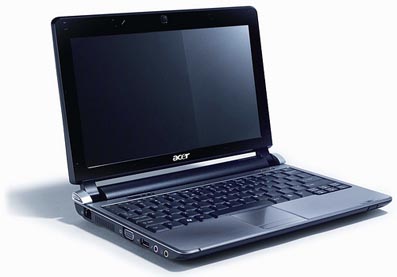
Design
I was more impressed by the D250’s girth—or rather, the lack of it. It’s only an inch high. Th at’s not as thin as ASUS’ svelte Eee PC 1008HA—but is still much nicer than lots of other, chunky netbooks.
The D250 I reviewed makes use of Intel’s 1.66GHz Atom N280, and Acer supplies it with 1GB of DDR 2 memory. Watch out, though: it’s also available with the 1.6 GHz N270.
Ports
Two USB ports and a multi-format card reader are found on the right, along with the power socket. On the left sit
the Ethernet, VGA, audio in/out and a third USB port. Th e vent is also on the left, and although the D250’s fan fi red up a fair amount during testing—even when doing little more than browsing the Web—it’s not loud enough to irritate.
The battery
The rear is home to nothing but the three-cell 2200mAh battery. A six-cell version is also available,though this battery’s a bulky affair that angles down from the notebook to lift the back of the machine up off the deck. It makes the machine less comfortable to carry—stick it in a bag so that it doesn’t bother you. You may find that it angles the keyboard better. At the front, you’ll find a small Wi-Fi power switch—Bluetooth can be axed using a button just above the keyboard.
Storage
Flip the D250 on its belly and three removable backplates are revealed, providing access to the hard drive bay (home to a 160 GB 5400 rpm SATA drive), the memory and an empty Mini PCI Express slot. If you want to improve on the memory, you’ll need to jettison the installed 1GB module, since the D250 only houses a single SO-Dimm slot.
Keyboard and touchpad
On the 8.9in A110, the keyboard took up almost the entire width of the chassis, barring a 1cm edge on either side of it. Admittedly, on a netbook there’s not much room but even a slight enlarging of the keys would improve usability. Acer could also have switched to the fl at-style of keys as found on its new Aspire One 751H netbooks. As it stands, the keyboard is a bit too fiddly to type on.
The trackpad measures just 50 x 30mm, and Acer has managed to furnish it with multi-touch capabilities, though these are fairly limited. You can zoom in and out by using a two-fingered pinching motion, while dragging two fingers left and right will perform functions such as navigating back and forth between Web pages and scrolling through an album of photos.
Display and networking bits
The 10.1-inch (25.6 cm) screen has a native resolution of 1024 x 600, and is bright, crisp and exhibits vibrant
colours. Best of all, though, it performs amazingly well outdoors and even in direct sunlight I was able to see the desktop clearly. The only thing you’ll need to watch out for when using it outside is the glossy screen attracting troublesome reflections. Located just above the screen is a webcam, but it’s only a 0.3 mega-pixel job. The fact that Gigabit Ethernet has been sacrificed for bog standard 10/100MB/s wired networking won’t concern too many prospective buyers, but Acer’s decision to go for 802.11b/g wireless instead of 802.11n is surprising to say the least. Bluetooth is built-in.
Verdict
The Aspire One D250 weighs just 1.1 kg, making it one of the lightest 10-inch netbooks you’ll find. Taking its lightweight nature into account, the fact that it managed to last two hours and twentyfour minutes through our video playback test, is admirable. You’ll get even more back-up by going easier on the D250, and with a fully-charged battery, JoliCloud estimated there was enough juice for about three and a half hours of action.
Speaking of performance, when troubled with a bit of Gaussian Blur action in Th e Gimp, it took an average of 4.8 seconds to apply the filter to our standard test image.
Acer Aspire One 751H
In many ways, the Acer Aspire One 751h, the company’s fi rst 11.6-inch (29.5 cm) netbook, is an improvement over the D250 I had reviewed. With Aspire One, users get an extra inch of screen real estate, a roomier keyboard, and more than five hours of battery life (on Ubuntu Netbook Remix). But although it’s larger, the 751h has a weaker processor. The result is a netbook that looks and feels great but offers a slower performance than other machines in its class.

Design
If you’ve seen the 10-inch Aspire One D250, the 11.6-inch version will look familiar. It also has a glossy black lid with Acer’s metal logo in the lower corner; the lid picks up fingerprints fairly easily. There’s also a grey palm rest and keyboard deck with a black keyboard and thin bezel to match.
Thus, the overall effect is conservative, but not cheap looking.The real cornerstone of the Aspire One’s design is not the colour scheme anyway, but its thinness. Whereas its competitors, such as the ASUS Eee PC 1005HA, are 1.4 inches (3.5 cm) thick and weigh close to 1.5 kg (the 1005HA weighs 1.4 kg), the Aspire One has a minimal footprint of 11.2×7.8×1.0 inches (28.4×19.8×2.5 cm).
The only catch: its six-cell battery juts out at the back, whereas some netbooks, such as the Eee PC 1005HA, have comparable battery sizes that fit more flush with the system.
The keyboard
The Aspire One 751h has raised keys with a slightly textured feel. The layout is close to full size, and we appreciate that the right Shift key is of full size and in the proper place.Touch typists will have no problem with this netbook, but we noticed that the keyboard flexed as we pounded out responses to IMs.
The touchpad and touch button
When we had reviewed the latest 10-inch Aspire One, we had complained about the tiny touchpad. With the 751h’s slightly wider footprint, however, comes a wider touchpad (2.5 x 1.6 inches or 6.3 cm x 4.1 cm), which was a pleasant improvement over the D250’s 2.0 x 1.5-inch (5.1 cm x 3.8 cm) pad.
Display and sound
One feature the 751h off ers that most of its 10-inch competitors don’t is a high-resolution screen. Whereas the
1005HA and Aspire One D250 have displays with 1024 x600-pixel resolution, the AO751h’s 11.6-inch display has a resolution of 1366 x 768. Th ose extra vertical pixels,in particular, mean you won’t have to scroll down as often when you’re viewing pages, a common inconvenience with netbooks.
The volume, as you would expect with a netbook, is weak. Music was predictably tinny, but no worse than on other netbooks.
Ports and the webcam
The 751h has a standard selection of ports: three USB ports, VGA output, an Ethernet jack, headphone and mic ports, and a 4-in-1 memory card reader. Th e memory card reader, VGA and one USB port are on the right side, and the rest are on the left. The netbook comes with an embedded 1.3 mega-pixel webcam, is exceptionally bright and sports extremely high latency.
Processor
The AO751h has most of the components that a netbook normally features—1GB of RAM, a 160 GB hard drive, and either a 1.6-GHZ or 1.66- GHz Intel Atom processor. However, this one sports a 1.33 GHz Intel Atom Z520 processor. Like many other netbooks, the 751h uses Intel’s integrated GMA 500 graphics solution, with 384 MB of shared memory.
Battery life
The 751h has some tough competition in the battery life department. I found the 1005HA lasting nearly four hours on JoliCloud. Th e 751h lasted three and a half hours, which, given that Linux has absolutely messed up power management capabilities, is still an impressive score. It beats my official sixcellHP notebook’s average by almost 90 minutes.
Verdict
If you’re craving a little more screen real estate than the average netbook, along with a high-resolution display,the Acer Aspire One 751h combines several compelling features, such as hours of battery life and an exceptionally slim 1-inch silhouette. But if all you want is a netbook— and not necessarily an 11-inch one—there are several comparably priced (albeit, thicker) 10-inch models, such as the Dell Mini 10V and the ASUS 1005HA, which run faster and last even longer.
ASUS Eee PC 1005HA
If I’m not mistaken, ASUS must have launched more than 20 models of its popular Eee PC netbook in the past year-and-a-half. With that kind of track record, it’s no surprise that this latest entry is one of the most well-rounded netbooks on the market. Th e ASUS Eee PC 1005HA has a chassis similar to the elegant Eee PC 1008HA and the same Intel Atom processor, 1 GB of RAM, and 160 GB hard drive as the 1008HA. And its high capacity battery lasts just short of four hours on JoliCloud, making this one of the longest-running netbooks yet.
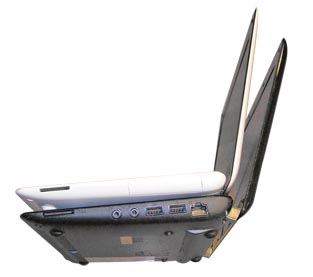
Inspired design
A member of ASUS’ Seashell family, the 1005HA is the 1008HA’s chunkier twin. Th ough less svelte than the inch-thick 1008HA, the 1005HA draws from the same gene pool—a fact demonstrated by its curved panels body of the 1008HA; no plastic covers the edges or hides the ports. Its glossy lid is covered in a scratch-resistant in-fusion fi nish, which is far from fingerprint-resistant, so you’ll need to keep a cloth handy.
The vital stats measure 10.2 x 6.9 x 1.4 inches (25.9 x 17.5 x 3.5 cm). It also weighs noticeably more than the 1008HA, but the 1.4 kg 1005HA netbook didn’t strain my shoulders even with the charger.
Ports
On the left side are a USB and full VGA port. On the right side are a 3-in-1 card reader, an Ethernet port, two USB ports (bringing the USB total to three, one more than the 1008HA), and headphone and microphone jacks.
The keyboard and touchpad
The Eee PC 1005HA includes the same comfortable, spacious keyboard found on the 1008HA. However, there are no spaces between the raised black matte keys, which I found fl at (I prefer them raised), but they did provide nice, tactile feedback. Moreover, the right Shift key is full sized and directly below the Enter key. A touchpad on/off button sits at the top left of the keyboard.
Th e 2.5 x 1.5-inch (6.3 x 3.8 cm) touchpad blends in with the system’s deck and is covered with small braille-like dots. Unlike most netbooks, the pad had very little friction, and navigating the desktop didn’t require much backtracking. As with other Eee PCs, the touchpad also supports multi-touch gestures; using two fingers to pinch the pad and zoom in on a Web page was easy, and the image quickly rendered in its new size. The single mouse button was comfortable for making selections.
Display, audio, and the webcam
The 10.1-inch (25.6 cm), 1024 x 600-pixel resolution LEDbacklit display on the 1005HA allows Web pages and windows to fi t-to-size on the screen. While the videos looked smooth, and the colours were bright, tilting the glossy screen back 45 degrees resulted in a slight glare; horizontal viewing angles were better. From afar, the inch-thick, glossy black bezel looked as if the screen was flush with the frame. Up close, however, you could clearly make out the raised frame.
Above the display, a 1.3 megapixel webcam provided clear images. The speakers, located at the bottom front edge of the system, allowed us to hear the soundtrack loud and clear.
The processor
Configured with the same 1.66-GHz Intel Atom N280 processor and 1GB of RAM as the ASUS Eee PC 1008HA, I didn’t see much change in everyday performance on the 1005HA. Th e Intel GMA 950 integrated graphics chip with 128 MB of shared memory was able to playback a downloaded high-defi nition 720p video clip smoothly with no hiccups.
Verdict
An attractive design, comfortable keyboard with appropriately placed keys, and almost four-and-a-half hours of runtime (on Ubuntu Netbook Remix) makes the ASUS’ Eee PC 1005HA the most well rounded Eee PC to date. And it’s also one of the most affordable netbooks with its feature set. Those craving for a thinner netbook will be happier with the Eee PC 1008HA, but will have to pay a little more and be prepared for a slightly less battery life.
ASUS Eee PC1008HA
The most amazing thing about the Seashell 1008HA is the design, which is based on its name— rounded and clamshell-like. Measuring just 27mm at its broadest point, and getting considerably thinner towards the front of the chassis, you’ll hardly notice the 1008HA Seashell in your bag, which is also because it weighs just over 1 kg.
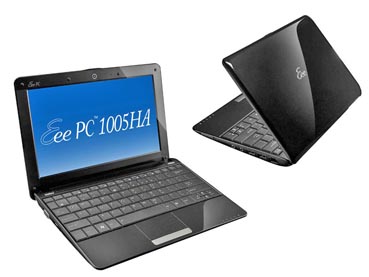
Display
The 10-inch (25.4 cm) screen is a joy to use. It features an average resolution of 1024 x 600 pixels, but images appear perfectly crisp, and the colour reproduction is flawless. Th at said, the glossy Super-TFT coating can make it difficult to view in the brightest conditions, with refl ections proving problematic.
Design
Despite the Eee PC 1008HA’s compact footprint, it features a wellspaced keyboard that stretches right to the edge of the chassis. Th e keys are 92 per cent full-sized, and feature a fl at design with slightly tapered edges. It’s not the best netbook keyboard we’ve seen, but it works well, and is very tough. It’s also a comfortable option when typing for longer periods. A high quality standard runs throughout, although the high-gloss plastics do attract fingerprints more than rival products, and you’ll have to use the protective case provided if you want to keep it looking new.
The svelte lines are enhanced by hidden ports, protected by plastic covers. This feature doesn’t help usability, however, with access proving slightly tricky.
Ports
Behind the covers you’ll find a USB port on each side of the chassis, and on the left sits a mini-VGA port. It’s the first time we’ve seen one of these in action, but thankfully an adapter is provided as standard, slotted neatly underneath the chassis. On the other side, you’ll also find microphone and headphone sockets, and an Ethernet port.
Storage
The ASUS also impresses when it comes to storage space, with a capacious 160 GB hard drive included as standard. You’ll find an additional 10 GB of online storage provided— offering better protection for your most important files, with no risk of damage if anything happens to the netbook itself.
The processor
Processing power comes from an Intel 1.66 GHz Atom processor, backed by 1024 MB of memory. Performance is reasonable, as long as you don’t intend to carry out intensive multi-tasking. Mobility is excellent, with the compact 3-cell battery life offering almost four between charges under normal workload.
Verdict
Overall, the Eee PC Seashell 1008HA is a compelling proposition. Offering quality, comfort and excellent mobility, it’s one of the best mid-range netbooks you can currently buy.
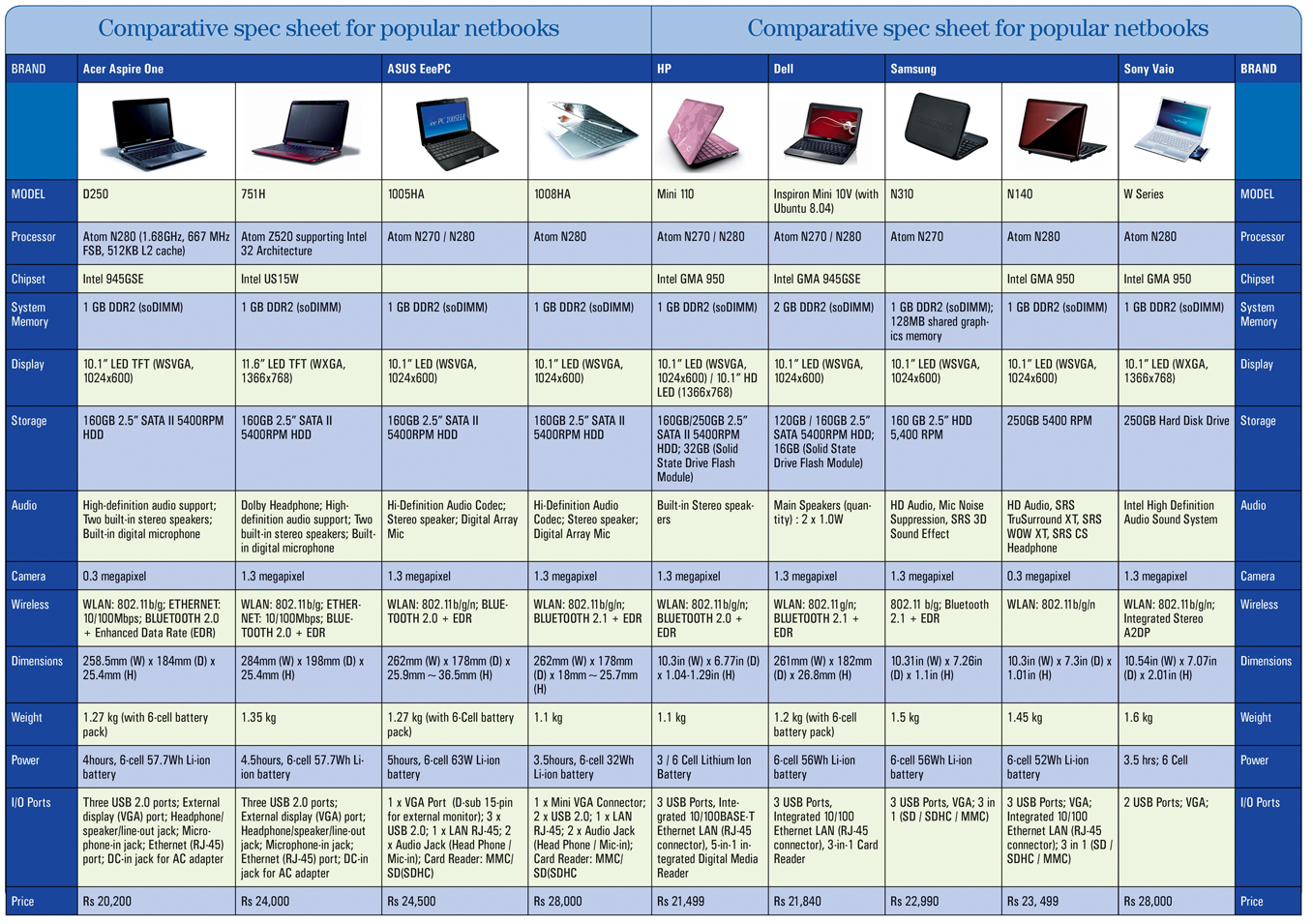
(to be continued…)










































































>> Windows XP had been shipped with almost every netbook since the very first of the breed ever left the factory.
I would have to disagree with this statement. Small notebook computers had been around for quite a while but it wasn’t until the OLPC project started shipping out the low-cost, Open Source based XO (Red Hat Linux with the Sugar interface), roughly 2007 or so, that the major manufacturers saw there was a big demand for low-cost, minimal laptops. It was not long after that when a ‘netbook’ really became a market segment of its own, and because at that time Microsoft was pushing Vista and trying to end-of-life WinXP, Linux was the OS of choice by a very wide margin, especially in Europe. Windows is currently the primary OS on netbooks, but that market segment came into being because Open Source was the only viable option.
Did you just publish this? Some of these models are quite old now. Additionally, your example of the Asus Eee 1005HA seems off as I know for a fact that it is capable of 10.5 hours using the right Linux distribution, and the right configuration. Probably want to do a little more research on this and update your article. :D
Published in Dec 2009 Linux For You Magazine. Uploaded only recently !